The “Bilbao effect”1 refers to the city-wide economic uplift that cultural investment and starchitecture can catalyze. It is named after its successful implementation through the development of Bilbao’s Guggenheim Museum in the Basque Country. This phenomenon appears to contrast with object repatriation, but it shares a delicate discussion on power dynamics. Whereas repatriated objects are looted and brought to the world’s financial centers, in this case the culture, values, and ideas of those centers are exported to the rest of the world. This phenomenon has put into question the complexity of museum diplomacy—the use of museums as a tool to achieve different political goals. Two recent examples are the Louvre Abu Dhabi and the Centre Pompidou x West Bund Museum, which serve as cases seeking to replicate Bilbao’s outcomes.
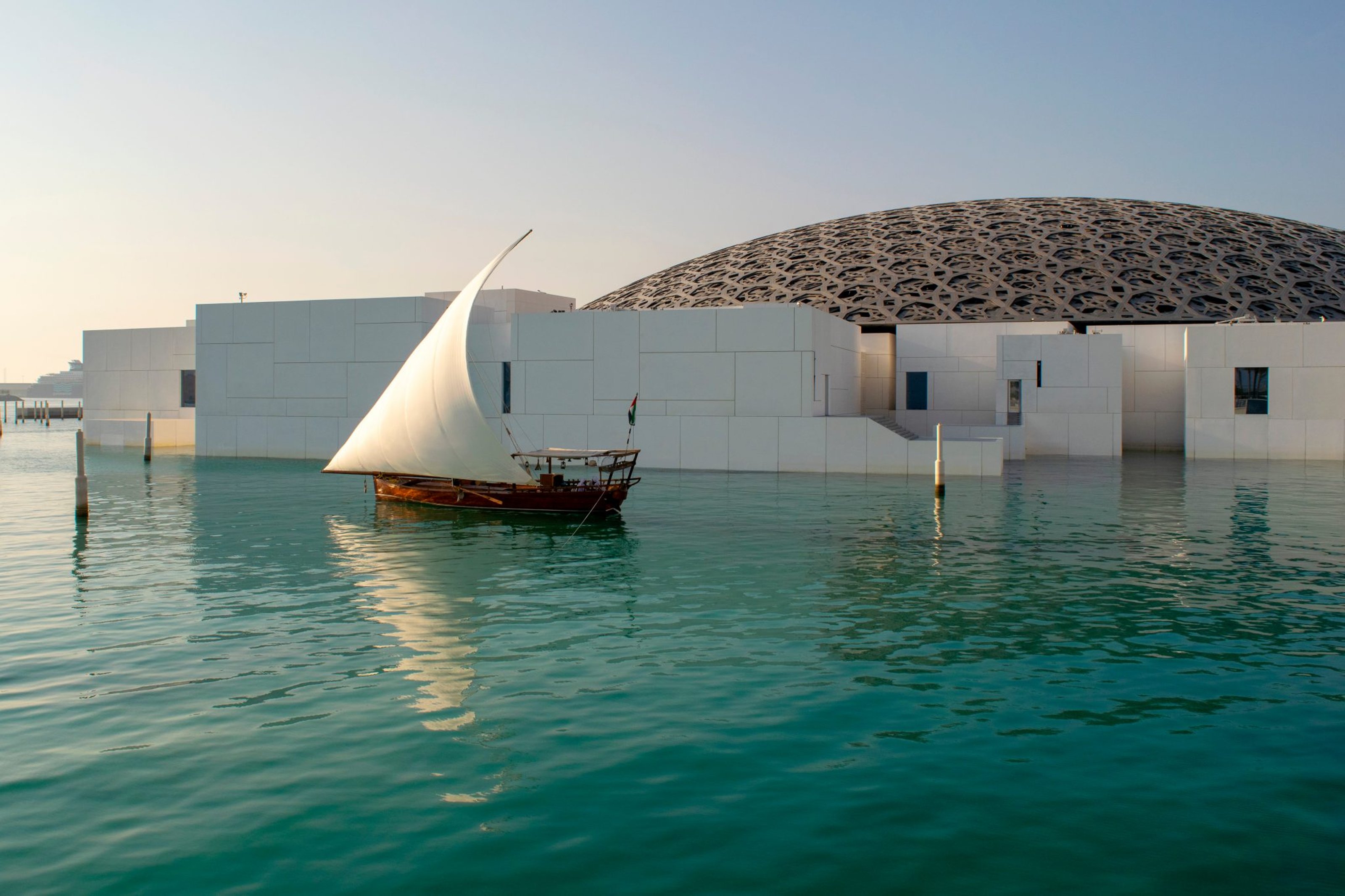
Louvre Abu Dhabi. Photo courtesy ViktoriyaFivko/Shutterstock.com
In 2007, the Louvre announced a deal with the capital of the United Arab Emirates. The arrangement would grant Abu Dhabi the use of the Louvre’s name for 30 years, as well as curatorial advising and art loans that the Emirate would house in a new building designed by architect Jean Nouvel.2 Ten years later the Louvre Abu Dhabi opened its doors.
In 2019, the Centre Pompidou x West Bund Museum Project opened to the public.3 The deal between the institutions stipulates that the Centre Pompidou lends works to the West Bund Museum in Shanghai and trains their museum professionals. Designed to last five years, the arrangement works as a partnership. Pompidou experts design exclusive exhibitions for the West Bund Museum, and the Centre Pompidou brings Chinese art exhibitions to Paris.4 The project is of significantly smaller scope than the Louvre Abu Dhabi, functioning only as a semi-permanent exhibit within the pre-existing West Bund Museum.
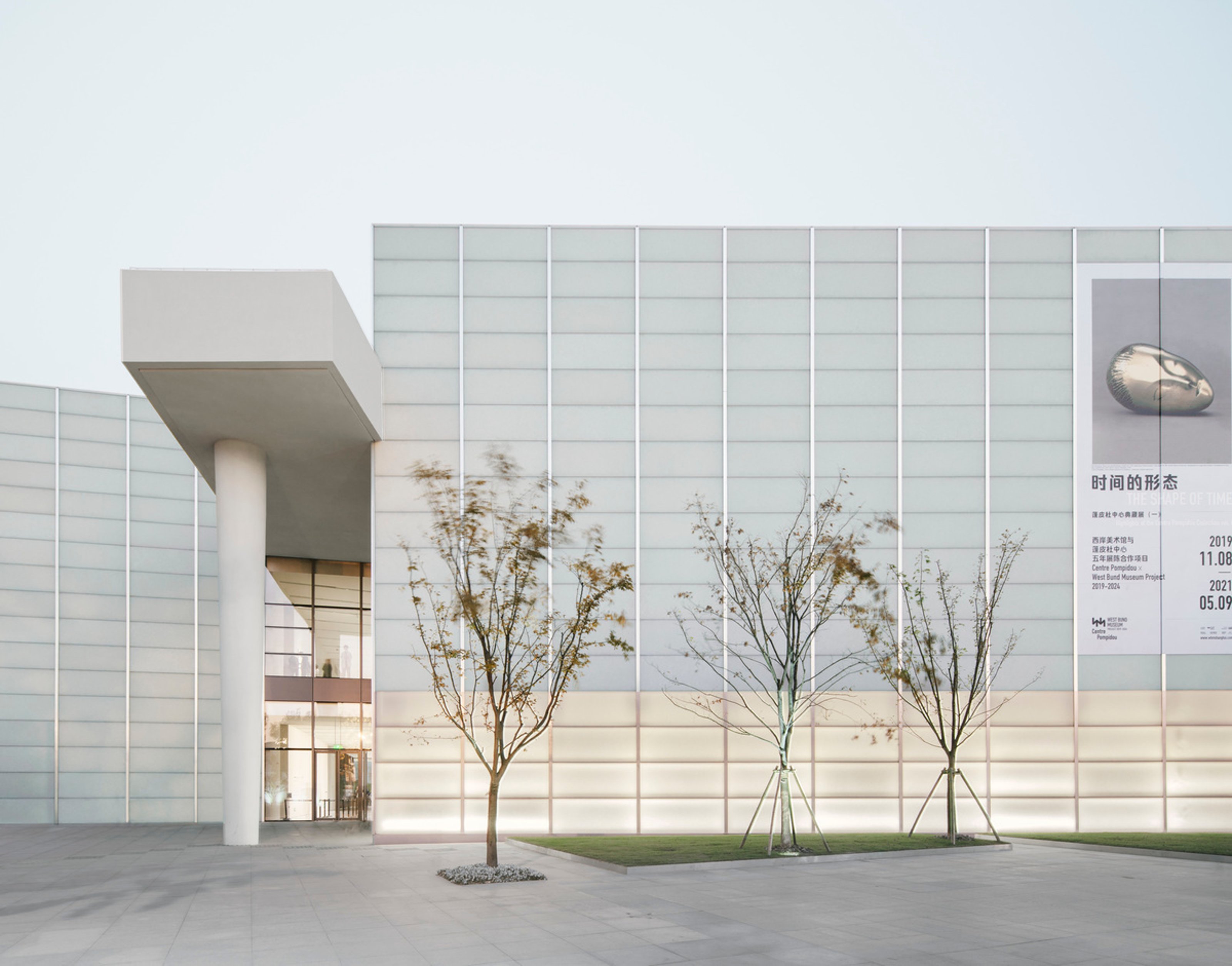
Entrance from the street, West Bund Museum. Photo courtesy Simon Menges/West Bund Museum.
Although different in scale, both accords were created under the pretense of, as French president Emmanuel Macron put it at the Louvre Abu Dhabi’s opening, building a “bridge between civilizations.”5 They are framed as explorations of unprecedented cultural exchange,6 implicitly positioning museums as platforms for peace-making capable of weaving positive relationships between countries.
The idea that museums can heal rifts between nation-states is called “museum diplomacy.” Both projects put their trust in a museum’s purported ability to advance specific political, economic, and social interests. They present themselves as ideal diplomats, capable of bringing cultures together for the common good of art. But, just like with diplomats, ulterior motives complicate things.
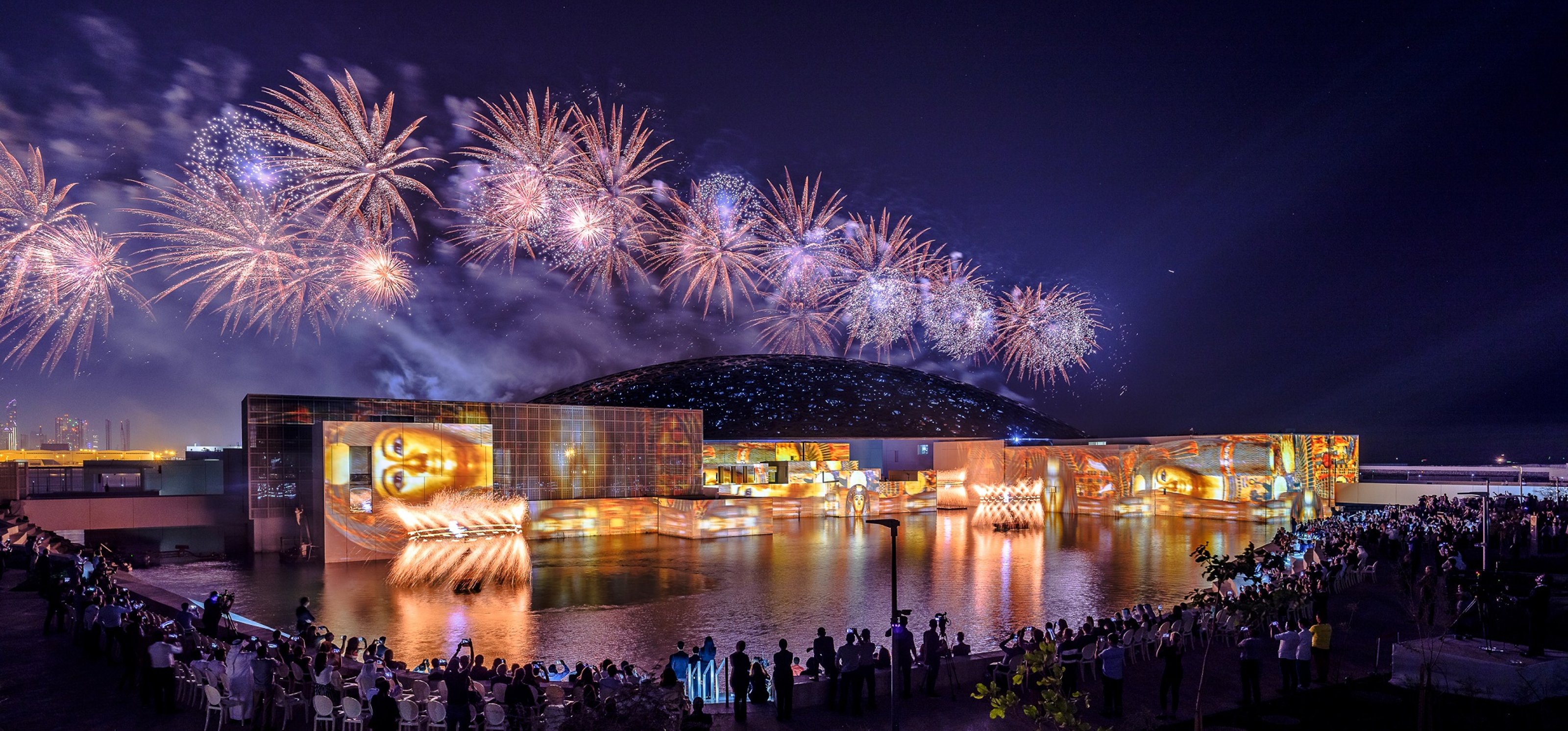
Opening of Louvre Abu Dhabi. Photo courtesy Vartan Kelechian.
Soft power refers to “a country’s ability to influence the behavior of others through persuasion and attraction.”7 Instead of coercing through military and economic tools like hard power does, soft power advances the attractiveness of a country’s culture and ideas.8 Museums yield soft power. They possess it not only through their exhibitions and programs—which have their own political biases—but also through their dynamism,9 which holds the power to attract millions of annual visitors. The governments of Abu Dhabi and Shanghai were no strangers to the concept when they undertook their respective projects.
The United Arab Emirates was founded in 1971.10 Abu Dhabi is a new city, with a new government that is concerned with development. Under such a mission, Abu Dhabi began making use of pre-established institutions to build its prestige.11 It erected architectural marvels, presenting itself as the miraculous emergence of futurism from mere sand.12 It planned the construction of the Louvre Abu Dhabi, the Guggenheim Abu Dhabi, and the Zayed National Museum to attain cultural parity with the West, to move away from misguided stereotypes of religious fundamentalism it is associated with.13
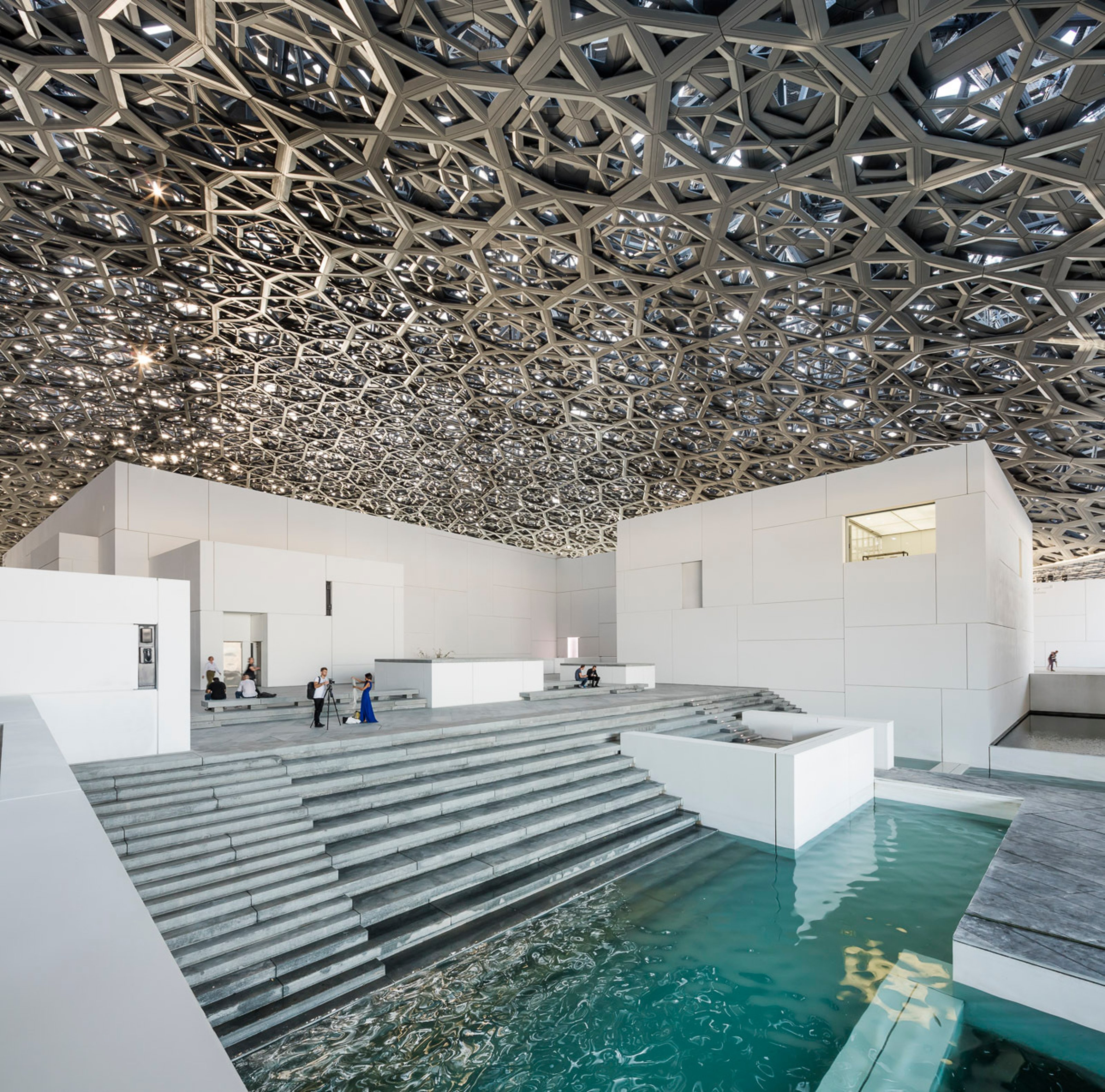
Interior of the Louvre Abu Dhabi. Photo courtesy Luc Boegly & Sergio Grazia.
In a parallel endeavor, the Centre Pompidou x West Bund Museum Project came into being under a national five-year cultural promotion plan. Beginning in 2013, the strategy saw the development of a number of art institutions in Shanghai.14 The objective was to cultivate the city’s cultural landscape and move it away from its suffocating link to luxury and commerce. Moreover, with China’s soft power dwindling in the years leading up to 2020,15 the project aimed to regain the momentum of the 2000s Chinese art scene.16 As the world began perceiving China’s closed and autocratic nature, the Centre Pompidou x West Bund Museum Project came to display its modernity and avant-garde outlook.17
In short, Shanghai and Abu Dhabi knew what they were doing when they brought Western art institutions to their territories. One way or another, they mobilized their soft power platforms to catalyze the frenzied popularity and advancement of the Bilbao effect. These enterprises did not simply seek to connect the UAE and China with France. Instead, they pursued the production of a specific, progressive image that would lend them cultural credibility and prestige and, through it, growth. But what exactly does it mean to recur to the West to craft a certain reputation?
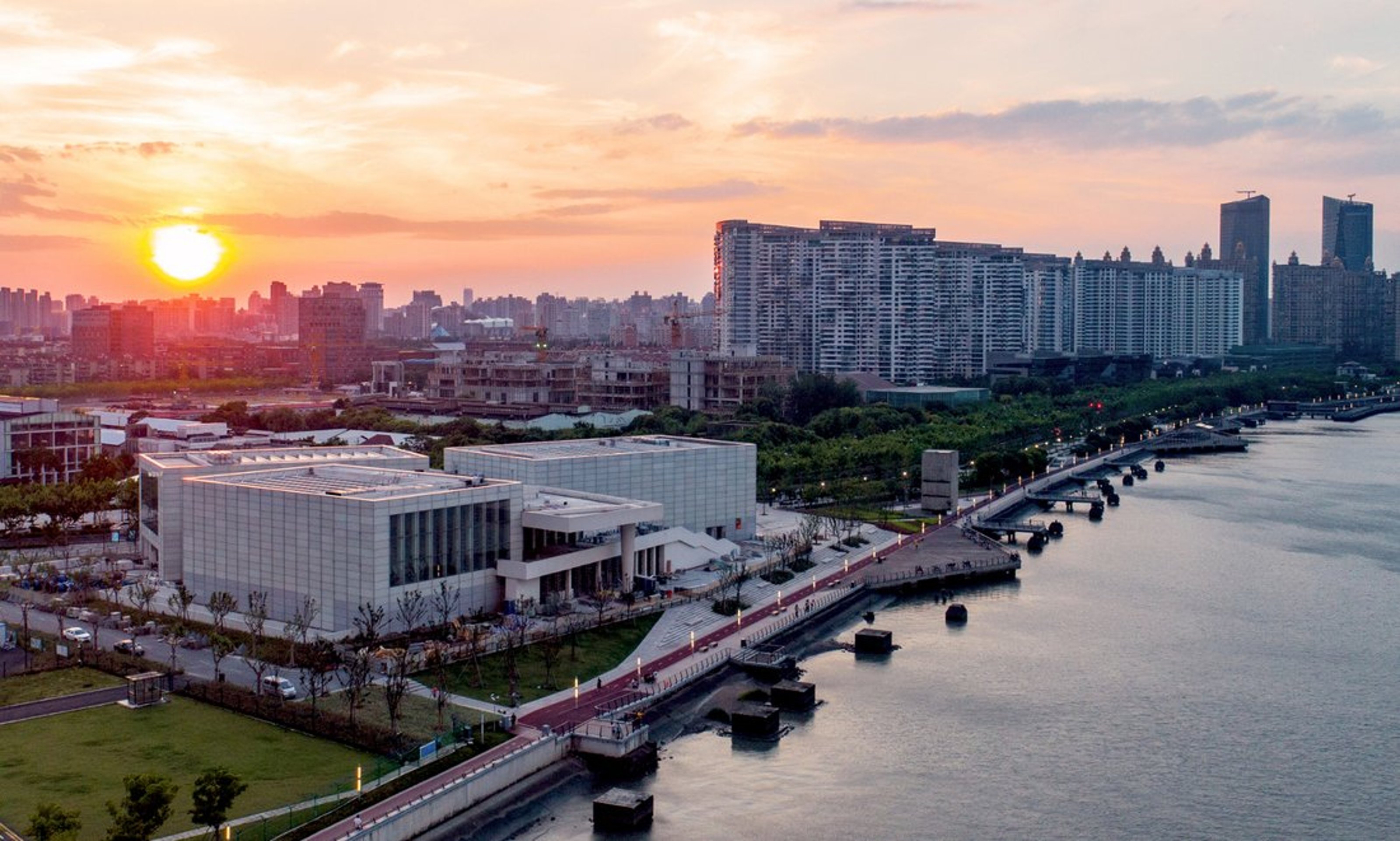
Centre Pompidou x West Bund Museum. Courtesy Centre Pompidou.
When describing the goals of the Louvre Abu Dhabi project, Mr. Donnedieu de Vabres, former French Minister of Culture, declared his consideration of it as “a way of enhancing [the] country’s image […]”18 Though this might seem obvious, the statement is rather revealing. The agreement cost the UAE between $800 million and $1 billion, part of which went to restoring French museums and artworks.19 With so much economic gain to be made, it is jarring that both Mr. Donnedieu de Vabres and Bernard Bistlene, former director of the Centre Pompidou, would specify that, more than anything else, the partnerships are about upkeeping the image of French museums.20
Things stop being so puzzling when one considers that the Bilbao effect grants soft power not only to the city that houses the institution but also to the institution itself. As Western Europe’s political significance curtails,21 accumulating soft power seems more important than ever. France’s willingness to sign away the names of its museums can be understood as a pursuit to accumulate soft power by latching onto an industry still infected with Eurocentrism: the canon of Art History as defined by European museums and their collections.
Though turning to France for curatorial training22 is not without reason, it’s also worth questioning what it means to assume its authority in the field of the arts. Using the Louvre and the Pompidou to access cultural status, Abu Dhabi and Shanghai inadvertently crystallized France’s position as an arts and culture authority.
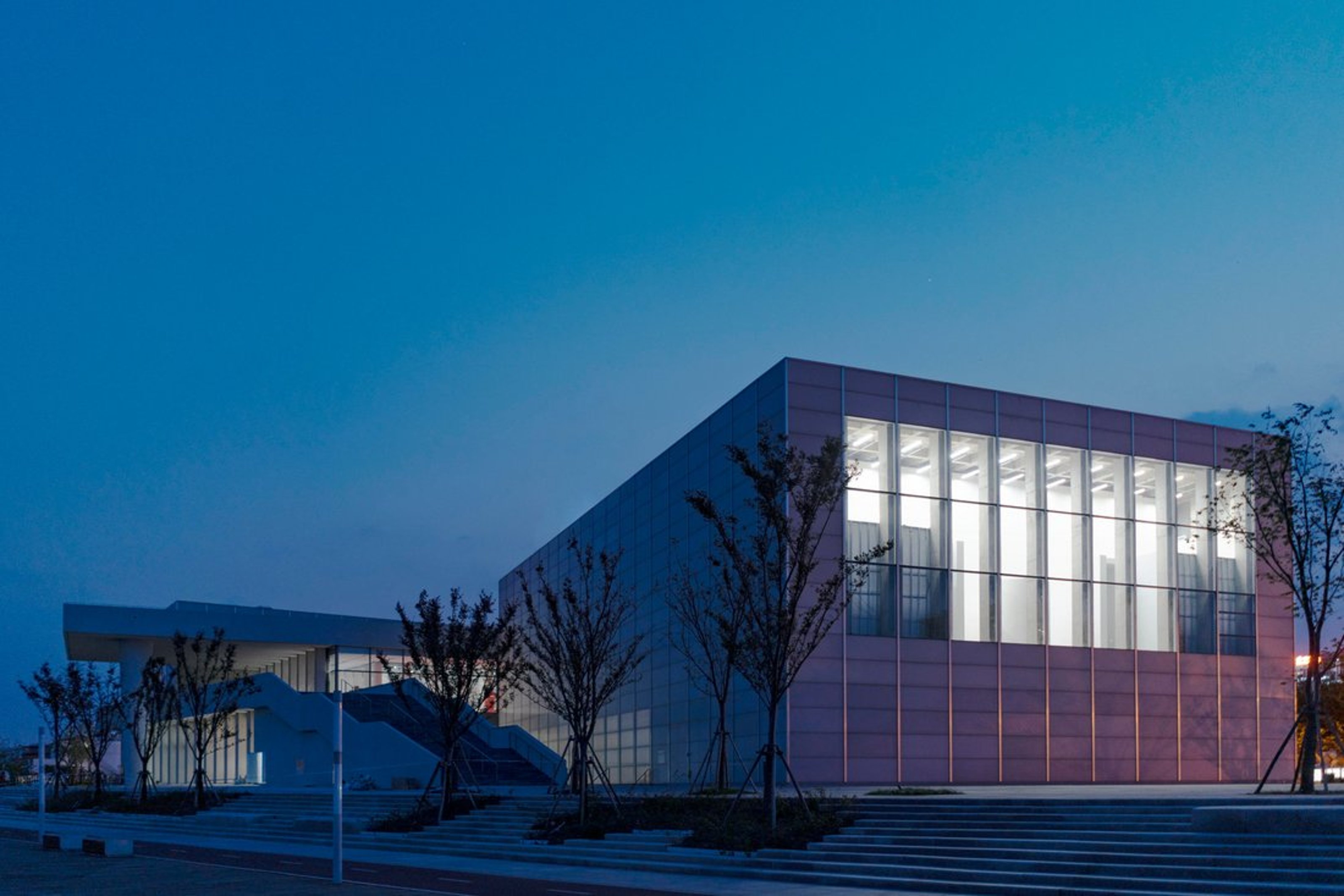
Centre Pompidou x West Bund Museum. Courtesy West Bund Museum.
While both projects combat Eurocentrism in their own ways, they also rely on the status that it bestows upon them. By displaying pieces in chronological and non-regional order, the Louvre Abu Dhabi offers a different perspective on the encyclopedic museum.23 By featuring locally-focused exhibitions,24 the Centre Pompidou x West Bund Museum Project refuses to commit to Eurocentrism. Still, if the Bilbao effect relies on building growth on the cornerstone of Western cachet, it necessarily upholds the very system it attempts to escape.
In other words, hoping to disrupt Western political and economic dominance, both of these projects defeat their own purposes by jumping onto the idea that the West is best. The Louvre and Centre Pompidou brands offer legitimacy, while the value of the West Bund Museum and the cultural landscape of Abu Dhabi is flattened to their potential as satellites of Western culture.
It’s hardly surprising that the opposite of object repatriation—the Bilbao effect; the export of Western institutions elsewhere—would have such a neo-colonial flavor. While the topic of repatriation rages on, we see countries manipulate the arts for their own advantage and export their forms of curating and institutions as the “correct” method under the guise of peace-making museum diplomacy. Much like human beings, art institutions seem to hold passport statuses that depend on their place of birth. Of course, it would also be unfair to blame Abu Dhabi and Shanghai for taking advantage of a system that is already in place. Ultimately, it is easy for museum diplomacy to take paths already paved, whereby emergent art institutions borrow their power from pre-established ones and simultaneously cement the established museums’ place at the top.